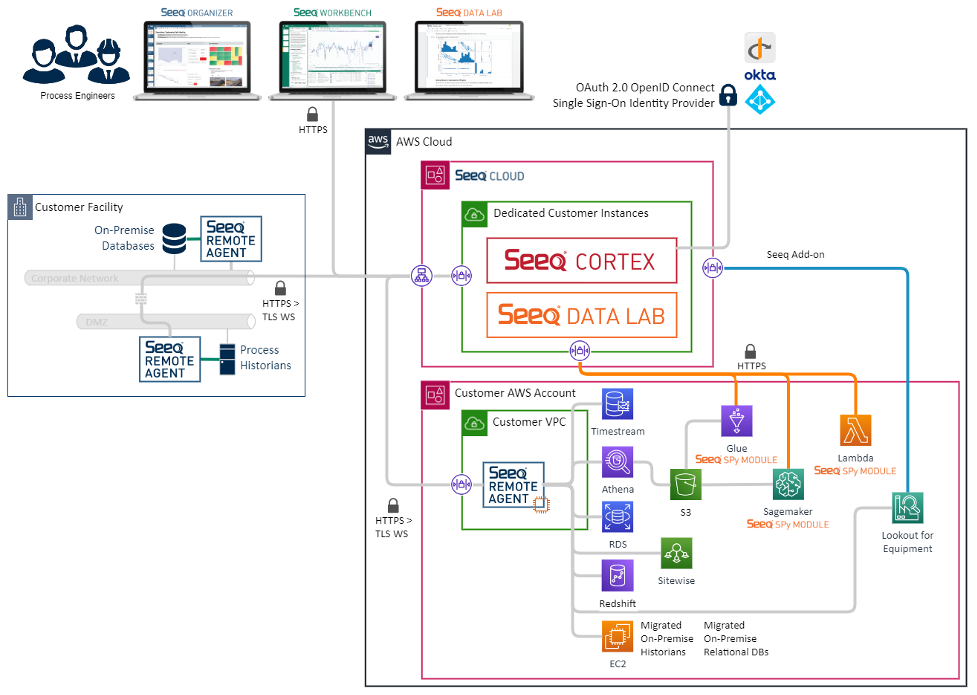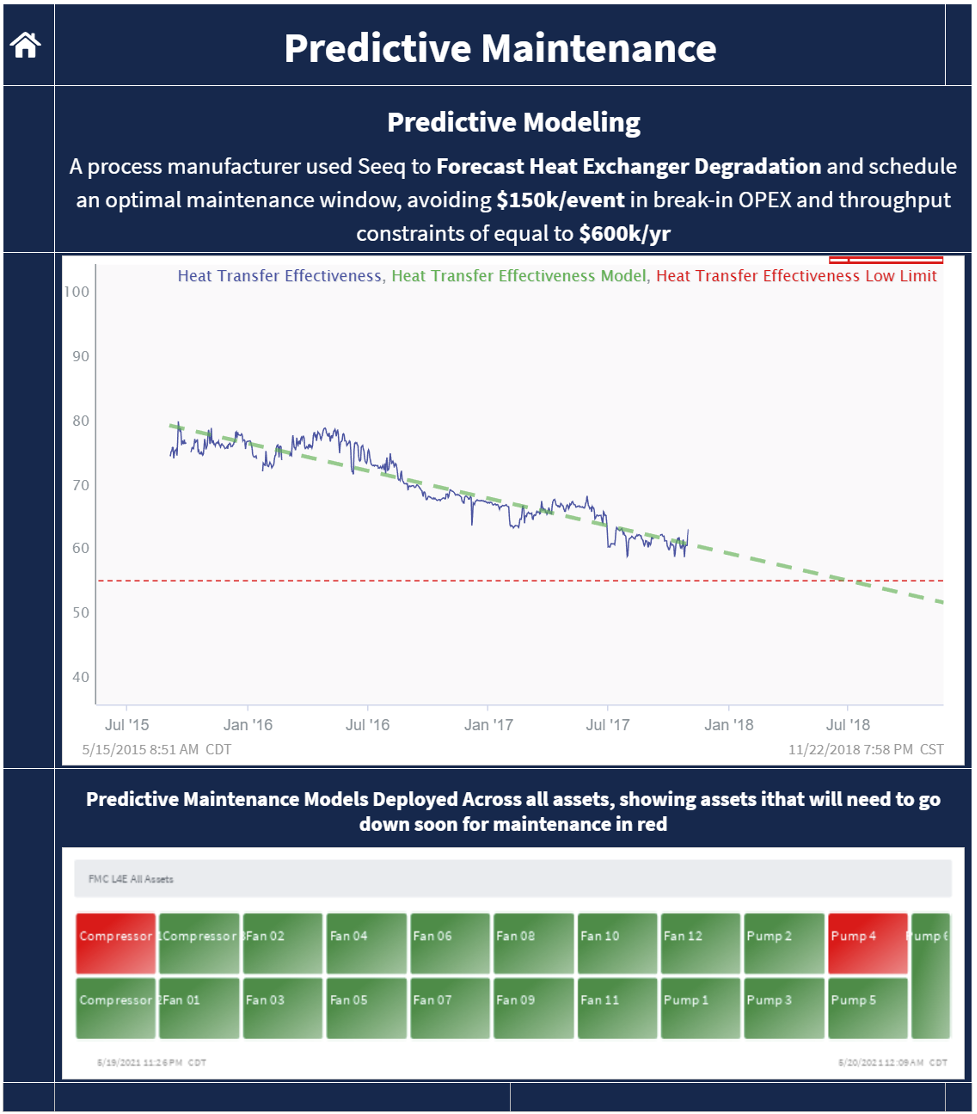AWS for Industries
Predictive Maintenance for Semiconductor Manufacturers with SEEQ powered by AWS
Introduction
Semiconductor chips have become an indispensable part of our lives with the advancements driven by technologies like 5G, Internet of Things (IoT) and Artificial Intelligence (AI) / Machine Learning (ML). Semiconductor chips power a broad range of devices, including consumer devices, automobiles, smart cities and homes, data centers, and more. The increased demand for semiconductors along with the COVID-19 pandemic, geopolitical issues including trade wars, and capacity constraints, have created significant supply chain issues across the entire silicon value chain.
To address these challenges and foster innovation, the US government enacted the Chips and Science Act in 2022, which includes $52 billion plus tax incentives as part of a $280 billion Industrial Policy Bill covering research and development in AI, Robotics and Quantum Computing. The investment is expected to boost innovation and create new opportunities for Semiconductor companies. $39 billion has been appropriated for setting up new semiconductor fabrication facilities (aka “fabs”) or expanding existing ones in the United States. The European Union has proposed €43 billion for similar initiatives. Countries like South Korea, Taiwan, China and India have pledged billions of dollars towards research, development and modernization of semiconductor technologies and manufacturing. These new state-of-the-art fabs are expected to be secure and resilient to accelerate technology innovation pipelines.
However, setting up a new semiconductor fab requires cutting-edge equipment, intricate manufacturing processes, and workers skilled in fab operations, making it a complex and expensive process. Once operational, the fab must run continuously, with minimal downtime, to maximize profits and meet production targets. One proven solution to reduce maintenance costs and downtime is predictive maintenance.
There are challenges in creating predictive maintenance models, such as siloed data, the offline nature of data processing and analytics, and having the necessary domain knowledge to build, implement, and scale models. In this blog, we will explore how using Seeq software on Amazon Web Services can help overcome these challenges.
Scheduling maintenance: from preventive to predictive maintenance
In semiconductor manufacturing, the conventional method for scheduling maintenance involves a mix of preventive maintenance (PM) and reactive maintenance. Subject matter experts (SMEs) set preventive maintenance schedules based on historical performance using a predetermined parameter such as hours run or wafers processed. This approach is used for tools such as lithography, etch, or deposition tools. It ensures that the products produced are good quality and allows for planned maintenance to aid in production planning and minimizing downtime. The downside is that conservative threshold parameters could lead to a loss in higher availability, an increase in Mean Time Between Clean (MTBC), and higher maintenance costs. Reactive maintenance is only performed on equipment that has failed, malfunctioned, or produced defective products. This type of maintenance is usually performed on equipment such as heat exchangers, chillers, or vacuum pumps – either due to infrequent breakdown or the availability of IoT/sensor data to monitor performance. Unfortunately, reactive maintenance is not desirable since it creates unplanned downtime and disrupts production.
Predictive maintenance (PdM) is a superior alternative to traditional maintenance methods. It leverages IoT/telemetry data from physical sensors, process variables, and product metrology data to anticipate when maintenance is needed. PdM also offers a time window to take action before a failure event occurs. Compared to the traditional approach of scheduling maintenance on a set cycle, PdM is more efficient. According to Deloitte Analytics Institute, PdM is expected to result in 5 -10% cost savings in operations and reduction in overall maintenance costs.
In order to develop a predictive maintenance model today, process engineers obtain an offline dataset and develop the regression coefficients in a spreadsheet, and then build out macros to assist in checking the model going forward. This is fragile, time intensive, and is only feasible for spot checks. In some cases, a coding environment like Python has been leveraged in a limited manner to deploy predictive maintenance models, but this requires coding abilities and/or valuable data scientist time. Seeq, powered by AWS cloud alleviates these limitations. Process engineers across industries have seen success in using Seeq to develop predictive maintenance models directly without the need to code, nor the need for a data scientist. These models, often developed on “golden tools” or equipment that has been validated as running in an optimal state, are then easily scaled out to all applicable assets showing results in near real time, with just a few clicks.
Using Seeq on AWS for predictive maintenance
The combination of AWS and Seeq pairs a secure cloud services platform with advanced analytics innovation. Seeq on AWS can access time series and relational data stored in AWS data services including Amazon Redshift, Amazon DynamoDB, Amazon Simple Storage Service (S3), and Amazon Athena. Once connected, engineers and other technical staff have direct access to all the data in those databases in a live streaming environment, enabling exploration and data analytics without needing to go through the steps to extract data and align timestamps whenever more data is required. As a result, monitoring dashboards and running reports can be set to auto generate and are easily shared among groups or sites. This enables balancing machine downtimes and planning ahead for maintenance without disrupting schedules or compromising yields.

Figure 1: High level architecture of how Seeq can quickly operationalize and provide insights
Using Seeq, an engineer can access the data they need, develop a cleansed and contextualized dataset, and build a regression model for predicting maintenance on their equipment – all in an online environment using easy-to-use point and click tools. Then with the aid of an asset hierarchy that has been pre-configured or developed on the fly, these calculations can quickly be scaled to all applicable assets. In just a few hours, an engineer can develop a model of their equipment and apply it to all of applicable assets for predictive maintenance, something that traditionally took weeks to months to do.
The actions taken and findings can be documented directly alongside the analysis using the Journal feature. Because Seeq on AWS is cloud hosted, this naturally allows for easy sharing of analyses across teams and sites globally, while ensuring that sensitive data remains restricted via access rights at the item level (i.e. the ability to set access rights on any item, including an analysis, database or individual signal in Seeq). In practice, this enables sharing of analytics, like process or tool qualification documents or predictive maintenance models, across teams and sites, improving workplace efficiency and shortening the time from install through qualification to mature yield.

Figure 2: An overview dashboard showing a predictive maintenance model for one asset, then deployed across a fleet of assets using the Treemap, highlighting at risk equipment in red.
What does this mean for those trying to bring a new fab online, though? Seeq can be leveraged to easily cleanse data, and build and validate models to get ahead of the predictive maintenance curve by training models on applicable or similar machines at other facilities (or simply duplicating analytics that another site or team may have created), without ever having to deploy a coded custom solution. Then, as data becomes available at the new facility, models can automatically retrain themselves to continue improving maintenance accuracy and be more site specific. Similarly, a model can be developed based on data from a golden tool, and can be applied to all other assets of that type in minutes by leveraging an asset hierarchy (essentially a way of organizing process data to be grouped by asset). Essentially, this allows for a new fab to start up with a semi-mature predictive maintenance program that will automatically improve and be more accurate to that site as production continues.
Conclusion
The implementation of predictive maintenance in semiconductor fabs can help reduce maintenance costs and downtime. SEEQ powered by AWS can enable predictive maintenance with data-driven, state-of-the-art methods already proven in other critical industries. It provides a solution to overcome the challenges of implementing predictive maintenance models, allowing for easy data cleansing, model development, and sharing of analyses across teams and sites. In just a few hours, an engineer can develop a model of their equipment and apply it to all of applicable assets for predictive maintenance, something that traditionally took weeks to months to do. If you’re looking to improve your existing semiconductor manufacturing process or setting one up for a new Fab, consider using Seeq on AWS.